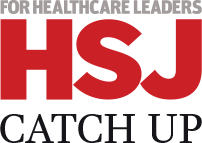The must-read stories and debate in health policy and leadership.
- Today’s vaccine news: Uptake leaps among final ‘priority’ cohorts
- Today’s CQC downgrade: Wards at trust facing deaths inquiry classified ‘inadequate’
NHS England and Improvement’s planning guidance for 2021 was published this week – a hugely significant document for NHS leaders.
For our exclusive analysis of this year’s marching orders for the NHS please check out this week’s HSJ Health Check podcast, where our regular host Annabelle Collins is joined by editor Alastair McLellan and bureau chief James Illman to discuss the guidance.
It’s fair to say the 2020-21 planning guidance strikes a markedly different tone from previous years. For a start, it only covers the first half of the six months of 2020-21, with a funding settlement for the second half of the year not expected to be confirmed until the summer.
The second noticeable overarching difference is that it is very light on outcomes-based targets.
While previous years have made ambitious, often overly so, pledges that the NHS will get back on track with its four-hour A&E or 18-week elective standard performance, the major targets this year are activity-based thresholds.
The guidance confirmed block contracts would continue to be in place until October 2021, meaning NHS trusts receive a set amount of core funding, regardless of the levels of activity they achieve.
But from April, systems that carry out more than 70 per cent of their pre-covid elective activity levels will be paid at tariff prices for the above-threshold activity, in addition to their core funding. The threshold will rise to 75 per cent in May and 80 per cent in June, before being set at 85 per cent from July to September.
To receive the additional payments and get a share of the £1bn elective recovery fund, systems will also have to meet several “gateway criteria” tests, such as checking the impact of their recovery work on health inequalities.
Systems will decide how to allocate the additional funding to their local organisations.
The planning guidance also says:
- Trusts were told to be flexible in their holiday policies, including letting staff carry over any unused annual leave.
- Most clinical commissioning group teams at ‘sub-ICS level’ should not be operating by October – as they are effectively subsumed by integrated care systems.
- Trusts must ensure “at least 70 per cent of all patients referred to an emergency department by NHS 111 receive a booked time slot to attend”.
- Local systems need to “return the number of people waiting for longer than 62 days to the level we saw in February 2020 (or to the national average in February 2020 where this is lower) and meet the increased level of referrals and treatment required to address the shortfall in number of first treatments by March 2022”.

























No comments yet